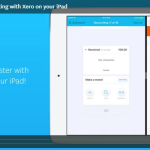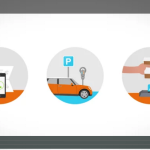Small Business Marketing Pt1
Marketing on a budget
Large businesses often have dedicated marketing departments with big budgets, because it’s not enough just to create a product or service – you also have to tell people about it.
Small businesses are at a disadvantage here, because they don’t have the funds or the staff to run big marketing campaigns. In fact the marketing manager in a small business might also be the PR manager, customer service representative and advertising director!
Constant Contact says small businesses have advantages in other areas. They can move fast, are nimble, and have access to tools that can help them do marketing on a budget. Connected tools are especially handy, using the cloud to quickly and efficiently dig into business data to find useful leads.
You probably already have the information your small business needs to conduct successful marketing for your small business. All you need to do is analyse it properly. Constant Contact has made it easy to stay in touch with your customers and persuade them to become loyal customers.
Five ways customer data contains hidden gold
Everyday business operations generate a lot of data. Emails to and from customers, POS (point of sale) records and social media interactions are full of valuable information. Analysts call some of this unstructured data, because it isn’t processed or ‘mined’ for business use.
That’s a shame – and potentially a financial loss – because this information can give businesses a boost. For example:
- Seasonal trends
We all know that t-shirts sell better in summer months and woolly hats sell better in winter. But what about more subtle seasonal variations? What’s the best stock to carry halfway through spring, or at the end of autumn? Do trends follow the months of the year precisely? How much variation is due to the weather? POS data will help you out here, but only if you analyse it properly. - Who’s buying what?
These days it’s not enough to know that your customers are buying your products. You need to know which customers are buying which products. Age, gender, socio-economic demographics, all of this is vital marketing information. Loyalty schemes can help here, which is why so many businesses use them. But digging into your data will also tell you a lot about customers’ purchasing patterns. - Multiple purchases – how are they linked?
Your POS system will record every sales transaction, including details of products that are bought together. This can help you create special linked promotions, but first you have to get that information out of the system and into a readable form. - Marketing new products
Customers might like your product but want it to do new things, or do existing things differently. Before you start the purchase or design phase for an upgraded model, analyse your customer feedback on social media and email. It will tell you what your customers want, which will save you a lot of time – and help you market the finished product to them. - Complaints patterns
Are the same complaints cropping up time and time again in emails and on social media? Analysing this data will help you identify problem areas in your business and fix them. Then you can tell your customers about your improved service – which is a form of marketing for your small business.
So looking at business data can uncover valuable insights. It can tell you what types of products your customers prefer, whether they like purchasing in-store or online, what time of year and even what time of day a customer makes the most purchases. It can also tell you why they might return something they bought, and what new stock you should consider buying or creating.
Once you have this knowledge you can set up intelligent marketing campaigns to sell more of your products or services. But first you must extract the information you need.



